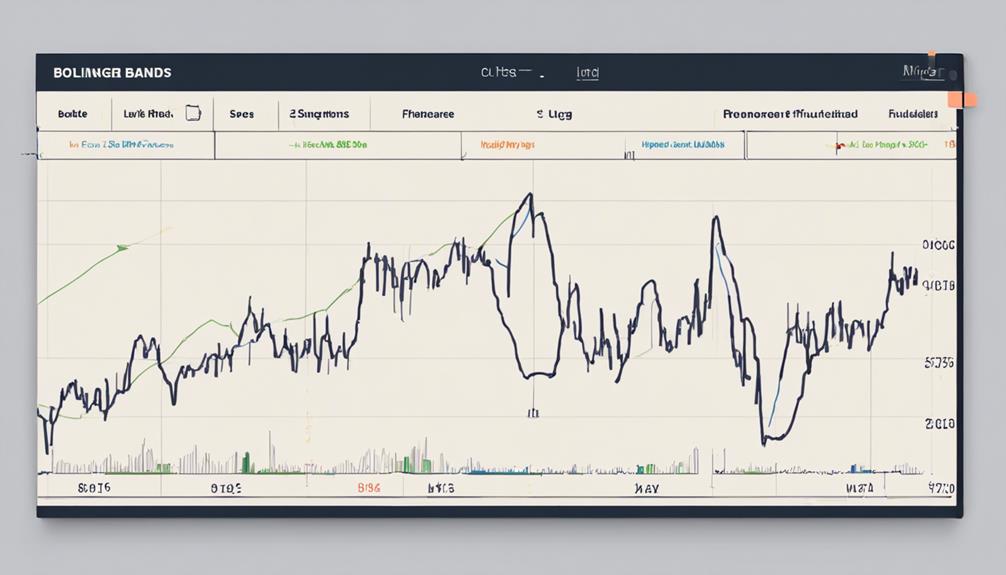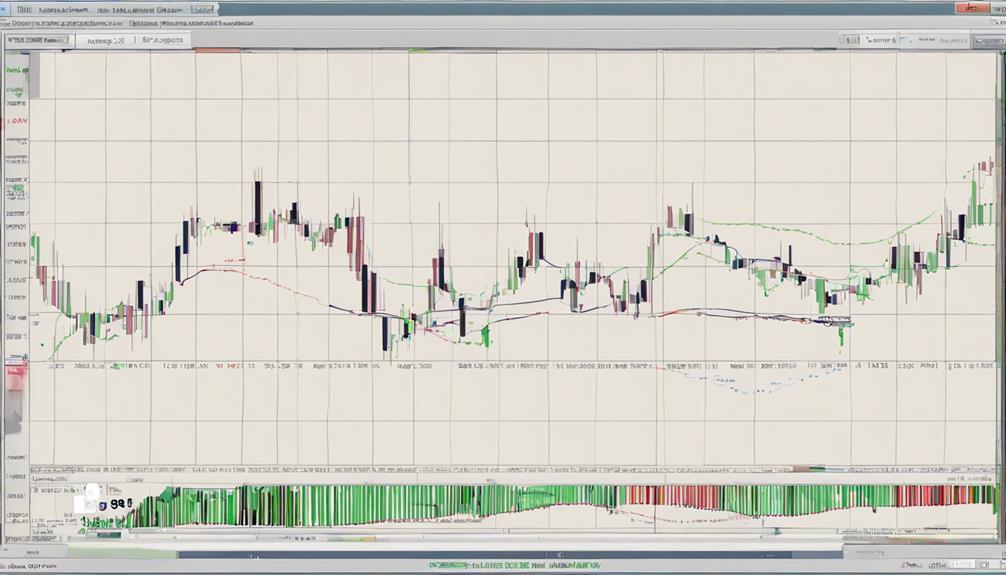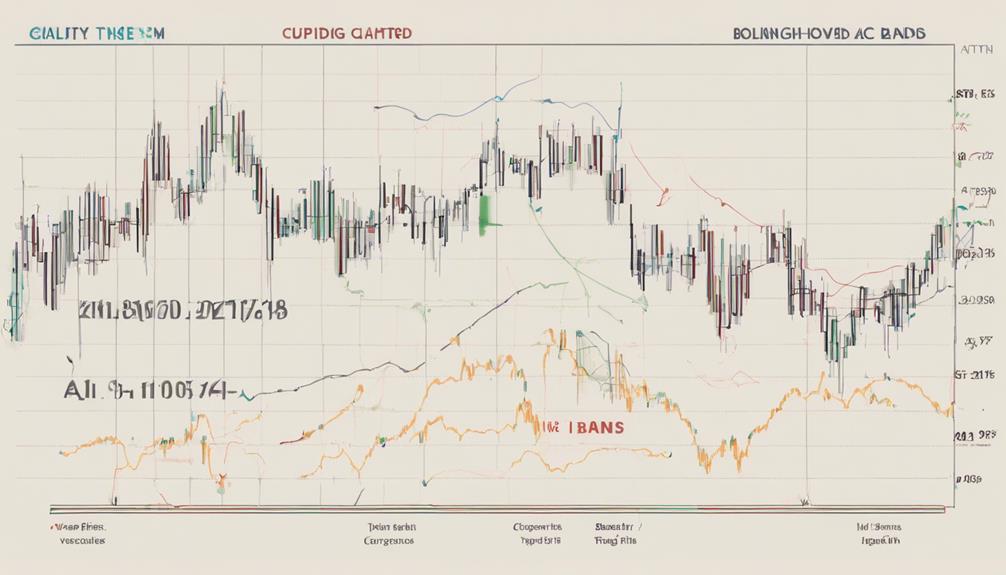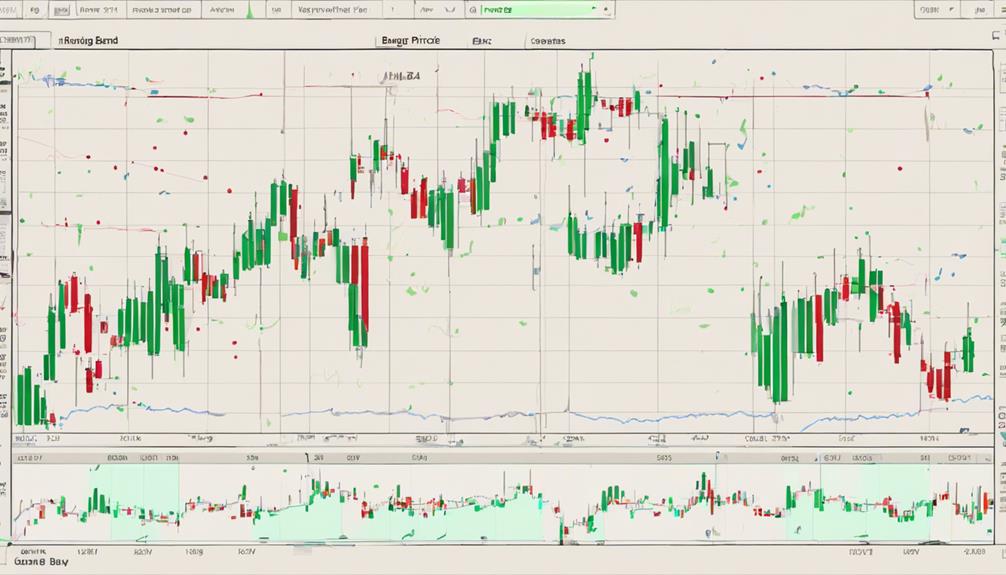Have you ever wondered how Bollinger Bands could potentially enhance your trend analysis skills in the financial markets?
Understanding the intricacies of these bands, including their components and customizable settings, could be the key to unlocking a deeper understanding of market trends and volatility.
By exploring the practical applications and trading strategies associated with Bollinger Bands, you might discover a whole new perspective on how to interpret market movements for more informed decision-making.
Bollinger Bands Overview
Bollinger Bands, a technical analysis tool used by traders, consist of a middle line, which is a simple moving average, with upper and lower bands set at 2 standard deviations from this line. The bands' width varies based on the asset's volatility, expanding during volatile periods and contracting during calmer ones.
When prices hug the upper band, it can signal an overbought market, potentially hinting at a reversal. Conversely, prices nearing the lower band may indicate an oversold condition, suggesting a possible upward momentum. By monitoring price movements relative to these bands, traders can identify trends and evaluate market conditions efficiently.
Bollinger Bands are pivotal in technical analysis for generating signals that capitalize on price volatility and trend recognition.
Components of Bollinger Bands

Utilizing a middle band, an upper band, and a lower band, Bollinger Bands are instrumental components in analyzing price volatility and potential trend reversals. Traders use Bollinger Bands in their technical analysis strategy to gauge market conditions.
The middle band is a simple moving average (SMA) that helps identify the average price. The upper and lower bands are calculated by adding and subtracting 2 times the daily standard deviation from the SMA, respectively. These bands serve as dynamic levels of support and resistance, aiding traders in spotting potential entry and exit points.
Understanding how Bollinger Bands are constructed and the standard deviations used can enhance your ability to interpret these technical indicators effectively.
Customizing Bollinger Bands Settings

To optimize your technical analysis strategy further, consider customizing the settings of Bollinger Bands to tailor them to your specific trading preferences and objectives.
Adjusting lookback periods can impact the bands' sensitivity to price changes, while increasing standard deviations can help accommodate price fluctuations. Experimenting with different moving average types, such as exponential or weighted moving averages, allows you to fine-tune the indicators.
Practical Applications of Bollinger Bands

For practical trading applications, understanding how Bollinger Bands signal market conditions is essential. Bollinger Bands offer valuable insights for traders engaging in technical analysis:
- Volatility Measurement: Track band widening for increased volatility and band contraction for decreased volatility.
- Identifying Market Trends: Use the position relative to the simple moving average (SMA) to determine market trends.
- Overbought and Oversold Conditions: Detect overbought conditions near the upper band and oversold conditions near the lower band.
- Spotting Price Reversals: Be alert to potential price reversals when prices breach the upper or lower bands.
Can Understanding Bollinger Bands Help with Better Trend Analysis in Technical Analysis?
Understanding bollinger bands technical analysis can definitely enhance trend analysis. By studying the bands’ deviation and volatility, traders can gauge potential price movements. Bollinger bands serve as valuable indicators for identifying entry and exit points, contributing to improved decision-making in technical analysis.
Can Bollinger Bands Help in Better Trend Analysis?
When it comes to trend analysis, bollinger bands in analysis can be a valuable tool. By measuring volatility and identifying potential overbought or oversold levels, bollinger bands can help traders make more informed decisions. Incorporating this indicator into your analysis can provide valuable insight into market trends.
Bollinger Bands Trading Strategies

Employ Bollinger Bands Trading Strategies to enhance trend analysis accuracy and trading decisions. Utilize the upper and lower Bollinger Bands to identify overbought and oversold levels, guiding potential trading opportunities.
Implement the Bollinger Band Breakout strategy to pinpoint entry and exit points during significant price movements. By incorporating the simple moving average (SMA) with Bollinger Bands, traders can establish price channels and set price targets effectively.
These strategies help in confirming trends and filtering out noise in price fluctuations. Enhance your trading approach by combining Bollinger Bands with other indicators for a comprehensive analysis, leading to more informed decision-making and improved trend analysis accuracy.
Frequently Asked Questions
How Do You Use Bollinger Bands in Trending Market?
To use Bollinger Bands in a trending market, observe price movements relative to the bands. When prices touch or exceed outer bands consistently, it signals a strong trend. This helps confirm trend direction and avoid false signals.
What Is the Most Accurate Bollinger Bands?
You'll find the most accurate Bollinger Bands with a 20-period moving average and 2 standard deviations. Stick to these tried-and-true settings to capture price movements effectively while avoiding unnecessary noise in your analysis.
What Is the Trend Following Strategy of Bollinger Bands?
To follow the trend with Bollinger Bands, observe price movements relative to the bands. Confirm trend direction for informed trading decisions. Trade in the trend's direction, up or down. Avoid false signals, filter noise, capitalize on price moves.
How Do You Interpret Bollinger Bands?
When interpret Bollinger Bands, observe price actions concerning bands. Near upper band signals overbought, lower band shows oversold. Bands widen in high volatility, shrink in low volatility. Gauge market conditions and potential reversals effectively.
Conclusion
In conclusion, mastering Bollinger Bands is like having a compass in a turbulent sea of financial markets. By understanding the components, customizing settings, and applying strategic analysis, you can navigate through price volatility with precision.
These bands act as a guiding light, helping you identify potential trend reversals and trading opportunities. With Bollinger Bands as your tool, you can steer your way towards profitable trades in the ever-changing landscape of the market.


